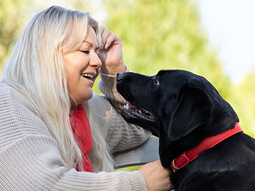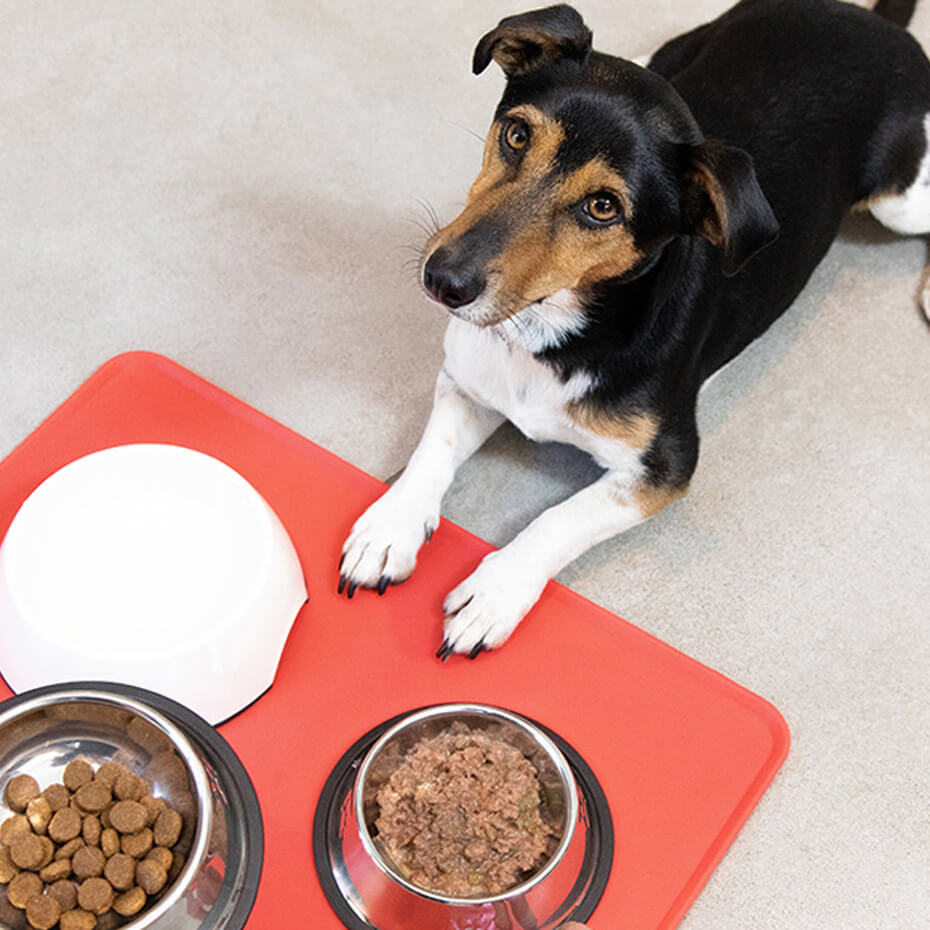
We know that spending time with pets helps reduce stress in people, but how can we de-stress our pets? Read on to find out!
Pets offer amazing stress-reducing benefits to people. One study found that when people took care of dogs for just three months, they showed significant drops in blood pressure and reactivity to stress. Another study, conducted over a 20-year span, found that people who owned a cat were 40% less likely to die from a heart attack.
Those are some pretty dramatic results! It’s only natural that we should give back to our pets.
“Dogs and cats have broken down the walls of our hearts,” says leading veterinarian Dr. Marty Becker. He notes that when pets and people interact, there’s a corresponding release of oxytocin, prolactin, and dopamine, and a decrease in cortisol. “It’s a reciprocal biochemical spa treatment.”
Signs of Stress in Pets
Your pet’s body language can say a lot about how relaxed or stressed they feel.
“We’re naturally attuned to stress in other people,” Dr. Becker says. “We know what a happy dog looks like, but what does a stressed pet look like? Stress increases cortisol, the fight or flight hormone, which over time can lead to long-term metabolic conditions.”
Major indicators of stress to watch out for in dogs include:
- Excessive yawning
- Excessively licking lips
- Shaking to dry off when there has been no contact with water
- Trembling
- Avoiding or hiding
For cats, keep an eye out for these signs:
- A drop in energy or activity level
- Changes in sleep habits
- A change in appetite
- Withdrawal
- Aggression
- Inappropriate elimination or spraying
- Trembling
- Excessive grooming leading to loss of fur and excessive meowing
Fortunately, some of the stress your dog or cat experiences is perfectly natural, like when they play, since it can keep your pet engaged and stimulated, allowing him or her to feel new sensations and learn new things. But chronic stress can lead to health issues. If you see any of the symptoms above, check with your veterinarian right away to eliminate any medical problems.
De-stress Your Pets These Holidays
Much of the stress pets experience can be reduced or avoided with a little TLC. Dr. Becker notes, “The key is to reduce anxiety triggers.” If you have a vet visit, for example, “Don’t get the carrier out the night before.” Give your pet a few days to get prepared. If they’re nervous alone or when travelling, play soothing music, or close the curtains. The less stimulus pets receive from the outside world, the less anxiety they’ll have about events outside their control.
Here are some common causes of chronic stress, along with some ways to help manage your pet’s anxiety.
Changes at Home
Dogs and cats are sensitive to their environments, and constant changes in the home can make your pet feel like he or she is out of control. If you move, make repairs, or renovate, try to keep as many things as possible tidy and consistent. If you have a cat, make sure she has unobstructed access to food, water, and the litter box, as cats like to have convenient escape routes handy at all times.
Changes to Social Circle
Have you adopted a new pet or had a new baby, guest, or significant other join your household? The loss of family member, or even a child heading off to college, can also stress out your pet. You can help by adding more play and exercise to your pet’s day. When introducing pets and/or people, meet on neutral territory, where nobody feels territorial. With people, give them a treat to feed your pet. With other animals, time and patience are key.
Seasonal and Temperature Changes
Although your pet may live inside, he or she is still very in tune with the weather. Changes in the seasons — and temperature differences — can greatly affect your pet’s overall stress levels. It can be very helpful to increase the frequency of playtime during winter as pets are likely to be less active outside. Also, make sure your pet has blankets to snuggle in for warmth. On hot days, make sure they have plenty of fresh water and cool hideouts where they can relax.
Boredom and Overstimulation
Energy varies between breeds, says Dr. Becker. “Greyhounds, Labs, Golden Retrievers, Jack Russell Terriers, Border Collies, and other active breeds have unfathomable energy.” He continues, “Wolves spend 80% of their time awake, moving. With cats, there’s not such an exercise requirement,” but providing outlets for play at home is still crucial. For both cats and dogs, he recommends food-dispensing that “recreates the hunt,” and puzzle feeders that engage your pet’s “body and mind.”
Boredom can be a big problem for cats, too, but so can overstimulation. Because cats have such sensitive hearing and skin, excessive noise and touching can cause a great deal of stress. If there are any signs of discomfort, give the touching a rest. Communicate with any children or other people in your home so they keep this in mind, too. Try to keep your TV and music at a volume that’s comfortable for your cat.
Senior Pets
Everyone loves a new puppy or kitten, but — like people — a pet’s needs change with age. They may be less active, preferring a leisurely stroll to a rollicking tug-of-war, so adapt to the changing needs of older pets as best you can. Keep up to date with their veterinary care, and ensure your old friend remains a healthy and happy member of your family.
When looking for ways to de-stress your pet, always try to view things from his or her point of view. With a little work on your part, your pet is sure to reward you with a happy, wagging tail or contented purr!


